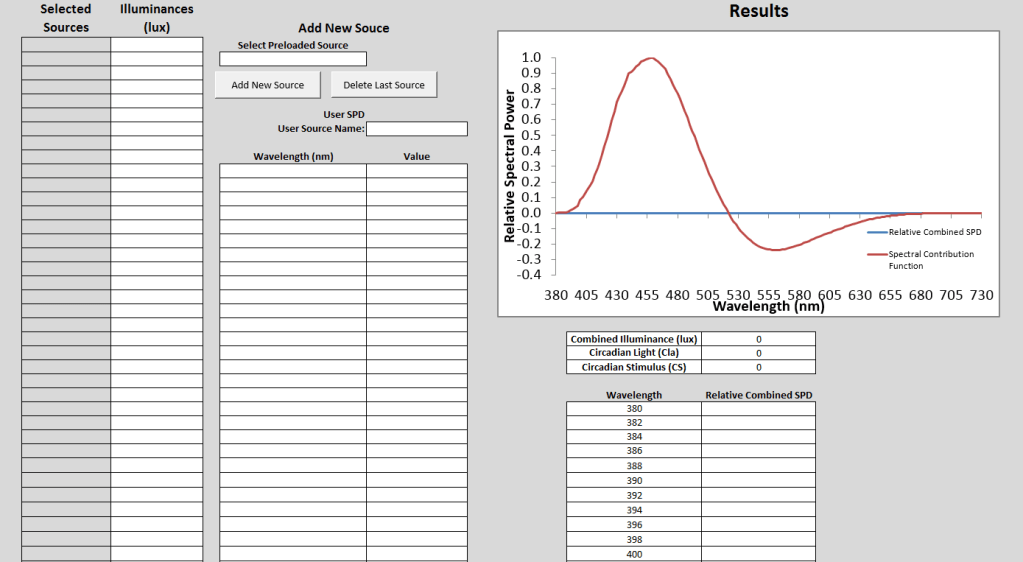This story was originally publishing in Architectural Lighting.
The Lighting Research Center (LRC) has issued a new version of it free, open-access circadian stimulus (CS) calculator. The new version provides several features and functions that were not part of the calculator’s first release. They include:
- The ability to calculate CS levels in rooms with multiple light sources (The original calculator only allowed for single light sources.)
- The ability to pre-load spectral power distributions (SPD) from the calculator’s dropdown menu and user supplied SPDs to provide a single CS measurement and a single applicable SPD
- The ability to save SPDs in a single file
As more and more lighting designers are being asked to design spaces that incorporate circadian light cycles, the tool aids designers in selecting light sources and light levels so that they can “… compare the effectiveness of various light sources for stimulating the circadian system.” The calculator uses the CS metric–“a measure of how one-hour exposure to a light source of a certain SPD and light level stimulates the human circadian system”–which takes into account “…both the absolute and the spectral sensitivity of the circadian system, ranging from 0.1, the threshold for circadian system activation, to 0.7, response saturation.”
The LRC developed the CS metric because of several research investigations around biophysical topics such as retinal neurophysiology. The findings have been validated in controlled experiments and used in several field studies by the LRC and other research entities. According to the press release, “The LRC has found that exposure to a CS of 0.3 or greater at the eye, for at least one hour in the early part of the day, is effective for stimulating the circadian system and is associated with clinically relevant outcomes, such as reductions in depression and agitation among persons with Alzheimer’s disease, entrainment in U.S. Navy submariners, and improved sleep and mood in office workers.” For more information about the CS Calculator, the accompanying circadian stimulus look-up charts, and to download the tool, go to the LRC website.
Read more stories like this at Architectural Lighting.
